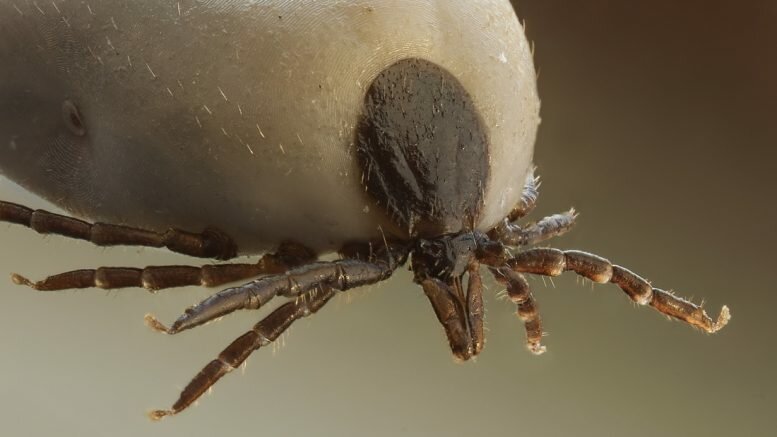Now is the time to check for forest ticks
The warm weather means that this year’s forest tick season starts earlier than usual. Biologist Yvonne Kerlefsen at the Norwegian Centre for Ticks asks Norwegians to check themselves thoroughly.
“Many believe that forest ticks are something that comes in the summer. Factually, as long as there are more than five degrees centigrade outside, forest ticks can be active,” biologist Yvonne Kerlefsen informs.
The Norwegian Forest Tick Centre at Sørlandet Hospital advises both health personnel and private persons. It experiences a great deal of activity throughout the year. The forest tick season officially lasts from April to November. This year, however, it has witnessed an increase in the number of inquiries from early March onwards.
“The season started early this year because of the heat, and it is, therefore, important to check in the evening – if you have been in an area with a lot of forest ticks. It is not always easy to avoid forest tick bites even if you are dressed properly,” the biologist explains.
An increase in TBE infection
In Norway, the forest tick is recurring in the coastal areas of southern Norway up to Helgeland in Nordland. It is most commonly found in the southernmost part of Norway.
“Generally speaking, there are pretty many forest ticks along the coast of Norway. It is important to check for them whenever you travel in places with high grass and forest anywhere,” Kerlefsen implores.
Many fear the forest tick because it can spread diseases to both humans and animals. Particularly great is the fear of the Borrelia bacterium and forest tick cephalitis, aka the TBE virus. Many experiences no or mild symptoms, but both borreliosis and TBE can potentially cause very serious illness.
“Last year there was an increase in the number of TBE cases in Norway, especially in Vestfold and Telemark. It increased from 16 cases in 2017 to 26 last year. It’s usually a rare disease, and it is too early to say why there is an increase,” Kerlefsen continues.
Consider forest tick vaccination
According to the Norwegian Institute of Public Health, the forest tick is considered the worst spreader of disease among the bloodsuckers of the northern parts of Europe. Not everyone who gets bitten becomes ill, but elderly, with weakened immune systems, are particularly at risk.
The most serious is the rare TBE virus, which in the worst case can cause inflammation of the brain and spinal cord. The TBE virus is found across Norway, but humans have become ill from it in but five counties.
“All reported cases are either from West Agder, East Agder, Buskerud, Telemark or Vestfold,” the biologist informs.
While Borrelia infection can be treated with antibiotics, there is no treatment for TBE. Many, therefore, choose to vaccinate themselves.
“The recommendation from the Norwegian Institute of Public Health is that people who are frequently in these areas, and are bitten by forest ticks often, should consider vaccinating themselves,” concludes biologist Kerlefsen of Sørlandet Tick Centre.
Facts about forest ticks
- Forest ticks have many different names in Norway but are often referred to as simply ticks.
- It is most common along the coast of Southern Norway and up north to Helgeland, but is also found inland in some places.
- Ticks suck blood, and can thus transmit diseases to both animals and humans, although most tick bites are harmless.
- The most common disease is borreliosis, which can be treated with antibiotics.
- The tick vaccine protects against the rare but very serious TBE virus. In 2017, 17,000 Norwegians chose to vaccinate – this was an increase of 2,000 from 2016.
- Ticks cannot jump and are, therefore, dependent on animals or humans touching the vegetation where they are located.
- You can avoid ticks by covering bare skin, choosing footpaths rather than dense vegetation, and applying tick or mosquito repellent.
- Veterinarians can prescribe anti-tick agents to protect dogs and cats.
- After staying in tick areas, always check clothes, skin and hair thoroughly.
- If bitten by a tick, you should remove it as soon as possible, preferably with a tweezer. There is little risk of infection if the tick is removed within 24 hours.
Sources: the Norwegian Tick Centre, the Norwegian Institute of Public Health
© NTB Scanpix / #Norway Today











